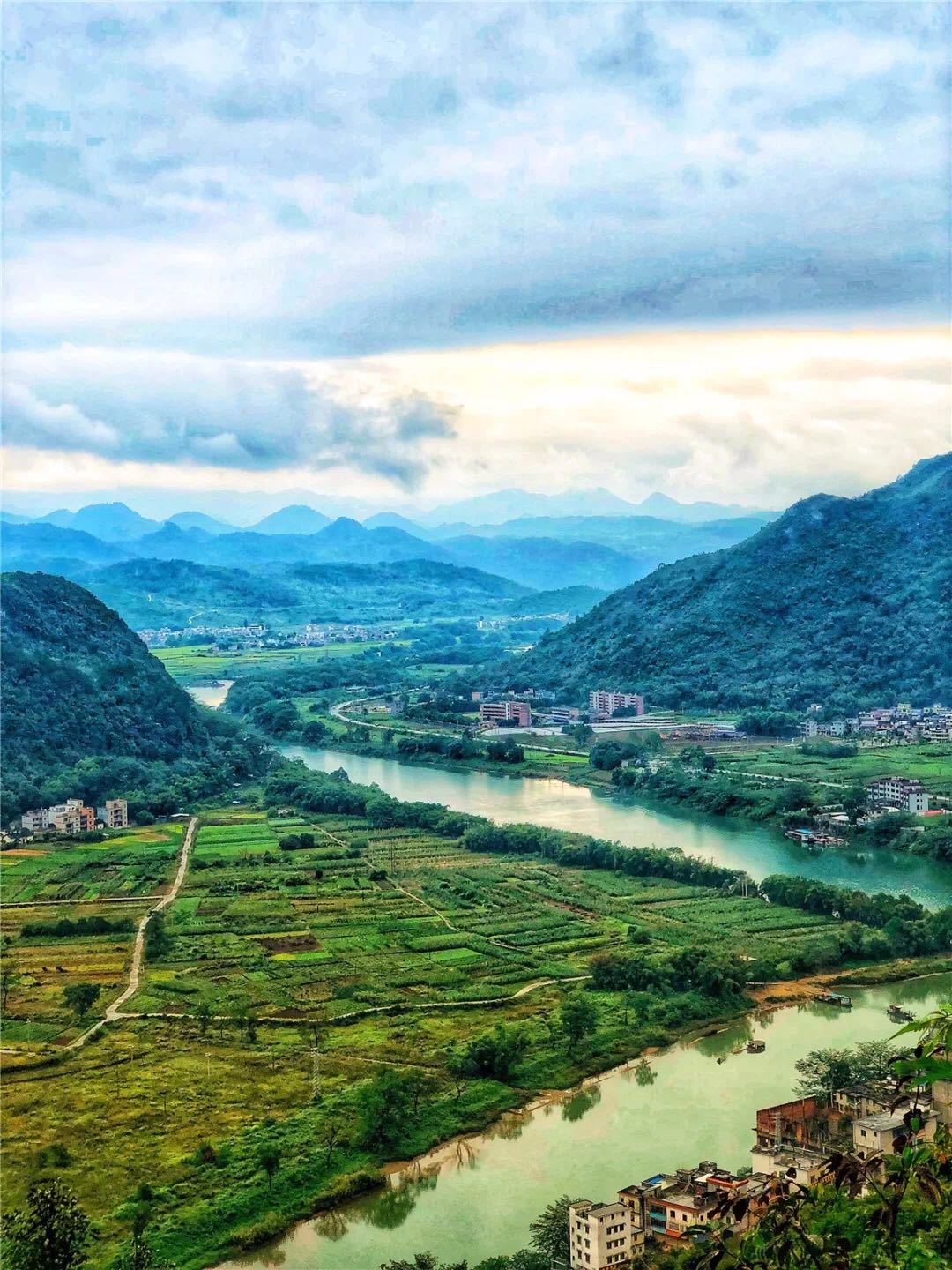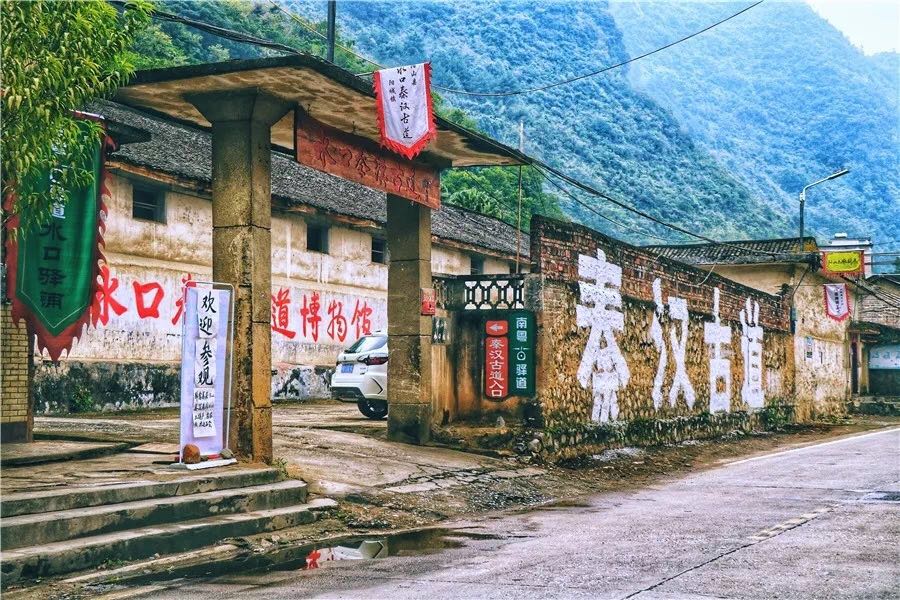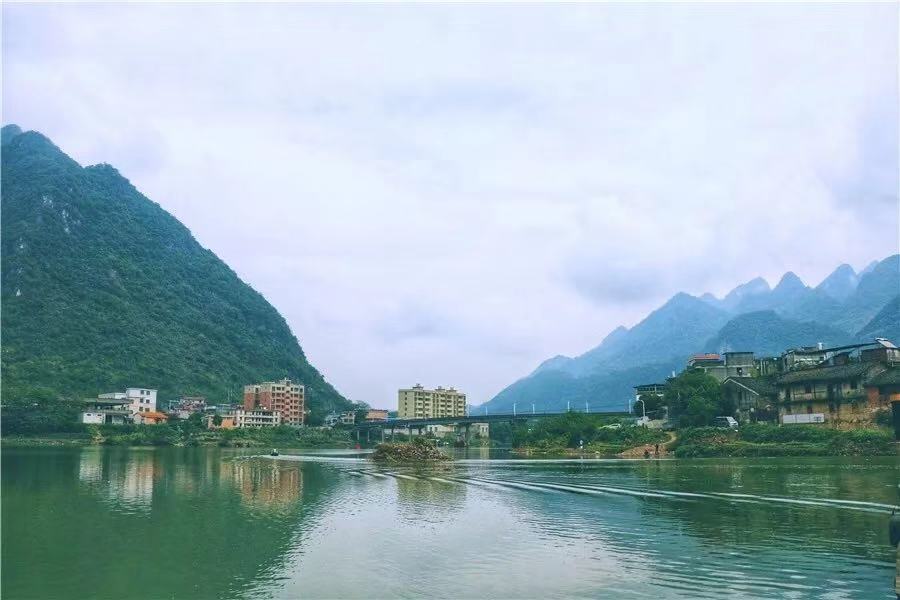Explore the ancient post road in South China

Across the vast lands in Guangdong lie some ancient post roads that stand witness to a long history. File photos
Across the vast lands of South China lie numerous ancient post roads which stand witness to the over 2,000-year-long history of exchange between South China and the Central Plains. These post roads carried mail and messages through high mountains, lofty hills and winding rivers. They not only bore the weight of goods carried on horseback, but also connected all civilizations from one end of the route to the other.
Though the once-prosperous post roads have turned desolate now, they still carry historic tales, and the spectacular views along the roads still await your exploration. This time, we will introduce the Shuikou Qin-Han Ancient Post Road located in Yangshan, Qingyuan, Guangdong. Deemed a trekking holy land by many wayfarers, this rare-known ancient post road is endowed with charming views.
The Qin-Han Ancient Post Road is one of the earliest official roads connecting South China and the Central Plains. Starting from the border between Guangdong and Hunan, the 201-kilometer-long road travels through Lianzhou in Qingyuan and then enters Yangshan County. After passing Shuikou Old Town, it divides into two roads to Guangzhou.
The Shuikou Qin-Han Ancient Post Road is the section hidden in the mountainous area of Shuikou Village in Yangcheng Town, Yangshan County. This 15-kilometer-section takes about three to four hours to trek.
Observation platform
Starting from the granary of Shuikou Village, you will pass through some serene alleys covered with trees. Walking along the mountain road and you will reach the ancient post road. After a roughly 20-minute walk you will reach an open space with an observation platform. Looking into the distance from the platform, you can take in the beautiful panorama of Yangshan: the clean water in the river runs along the mountains and the green rice fields are scattered far and wide.
The cool and gentle breezes soften the five senses of every visitor. Gently closing your eyes and listening to the tranquil sound of the nature, you will forget all the worry and stress weighing on you.
Though time has long washed away the original look of the ancient post road, from the lush mountain view, the turbulent streams, and the rustic stone bridges, you can still envision what it must have been like in its heyday.
Some sections of the road pass through small grasslands, which have been turned into grazing places for local people’s flocks. As such, you will encounter goats and yellow cattle grazing from time to time.
Stone forest and stone village
The surrounding area of the ancient post road belongs to karst landforms and passes through the largest stone forest in Guangdong. The well-preserved black stone are scattered throughout the valley, astonishing people with the power of nature.
Apart from natural beauty, there are also historical remains to be uncovered. To protest against bandits, the old-timey villagers built the stone village and stone walls. Even without the use of adhesive, the 100- to 200-year-old stone village and stone walls stand as firm and solid as before.
Shuikou Qin-Han Ancient Post Road Museum

In response to the increase in tourists, Yangshan has established the Shuikou Qin-Han Ancient Post Road Museum this year. The museum aims at creating an exchange and demonstration platform for Yangshan artware and craft techniques, an information exchange and sales platform for agriculture products, an incubator for rural startups and a leisure way station for tourists.
Shuikou Lian River

After the ancient post road trek, you can also check out the section of Lian River in Shuikou Town. Nicknamed “a gallery,” the view of this water-laden area outranks all other scenic spots along the river. With lucid waters and lush mountains, it forms a real life splash-ink landscape painting.
On both banks of the river, old folk houses and green fields stand among mountains. This place was selected as the shooting location for the movie “Country Couple,” which won the fourth Golden Rooster Award.
Xianling Mountain
Also known as North Mountain, Xianling Mountain is a tourist attraction with natural scenery and historic and cultural landscape. When Han Yu (768-864), a Chinese writer, poet and government official of the Tang Dynasty (618-907), served as the magistrate of Yangshan, he always invited his friends to read books and poems here.
The North Mountain Ancient Temple, located at the foot of the mountain in the north of the county, is currently the temple in China with the largest number of Buddha statues.